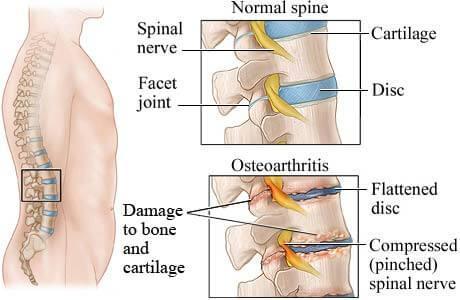
Quality of life exists in unison with a person’s ability to move and act freely. Spinal joint degeneration decreases the ability to move without restriction, thus diminishing quality of life. Large percentages of people suffer from unfortunate joint degeneration without any possibility of recovery.
Joint degeneration originates through a number of causes. The most predominant cause of degenerative joint problems occurs from hypo-mobility. This term simply means that a joint has lost its full range of motion. Decreased mobility begins when a joint moves slightly out of alignment from its usual position. Many instances stem from physical trauma or injury. Range of motion must be restored within an appropriate time frame or the specific joint will begin experiencing irreversible degeneration.
A subluxation refers to an alteration in the alignment and mobility of a spinal vertebra enough to interfere with the function of the central nervous system. The primary job of a Chiropractor involves evaluating and correcting spinal subluxations to ensure the health of a properly functioning nervous system. Part of that process involves maintaining the mobility and alignment of all the joints in the spinal column. The intimate connection between spinal joints and the nervous system mean that the function and health of the entire body directly correlates with the alignment and mobility of each spinal joint.
Doctors and researchers disagreed decades ago when discussing the amount of time needed for an improperly moving joint to begin experiencing effects of irreversible damage. The debate settled when x-ray findings showed that irreversible damage occurred after only two weeks of joint immobilization. That 1987 study from the Journal of Clinical Biomechanics maintains relevance today and continues to be a foundational framework for why spinal maintenance and Chiropractic care remains essential to lower the risk of unnecessary spinal degeneration due to subluxation. Regular Chiropractic checkups and adjustments help provide mobility and stability to the spine to prevent degeneration from occurring. Regular spine and nervous system care provide a proactive approach to maintaining a quality of life that does not wait for the presence of pain to call attention to a potentially irreversible situation.
Preventing spinal degeneration in the nervous system compares to proactive approach people use to prevent obesity, high blood pressure, or tooth decay. The first stages of spinal degeneration do not occur with pain, just like the first stages of a cavity go largely unnoticed without any signs or symptoms. Some professionals estimate that approximately 40% of 20-year old men and women already experience some stage of joint degeneration without any knowledge of their advancing condition. The most beneficial long-term health care plans involve regular Chiropractic checkups and adjustments to ensure longevity and a greater quality of life without the need for medical interventions. A better future for the whole family begins with Chiropractic.
